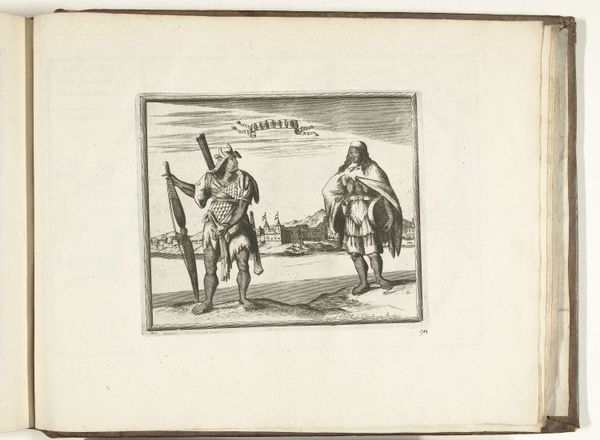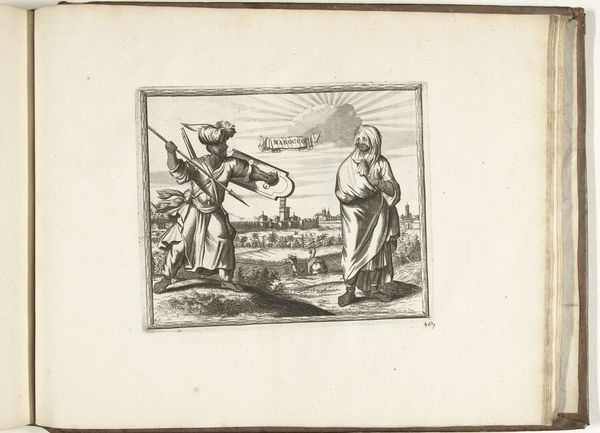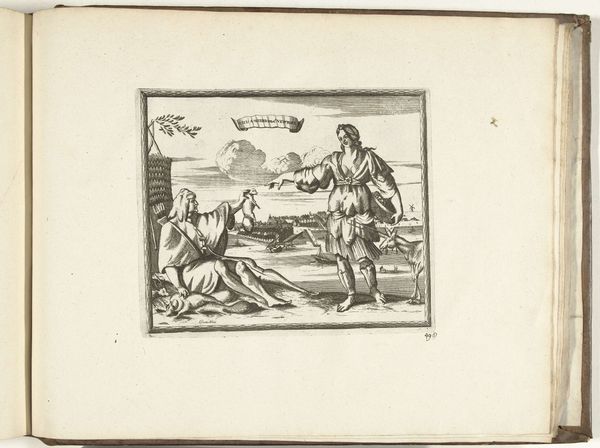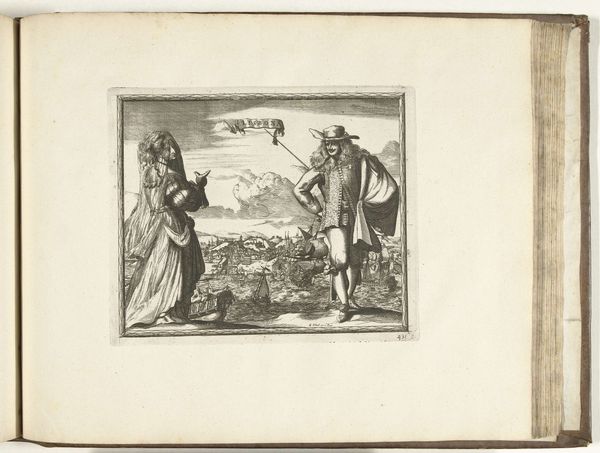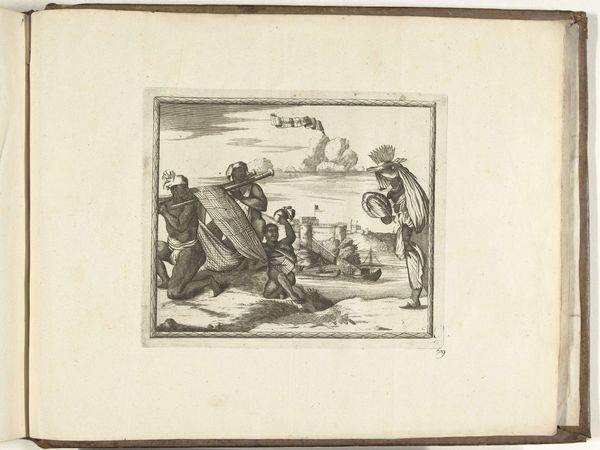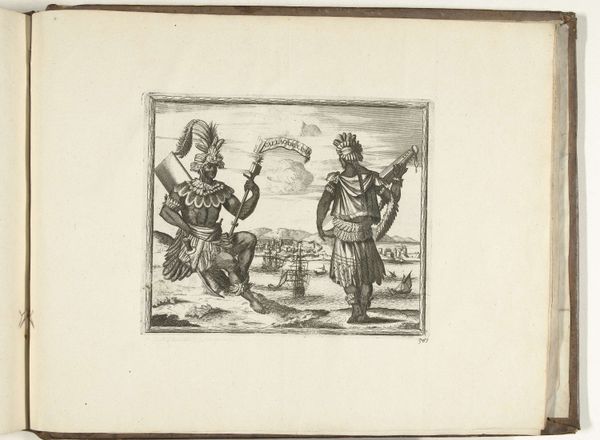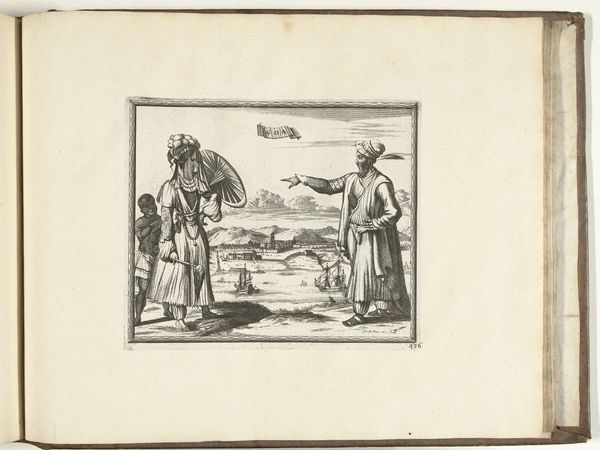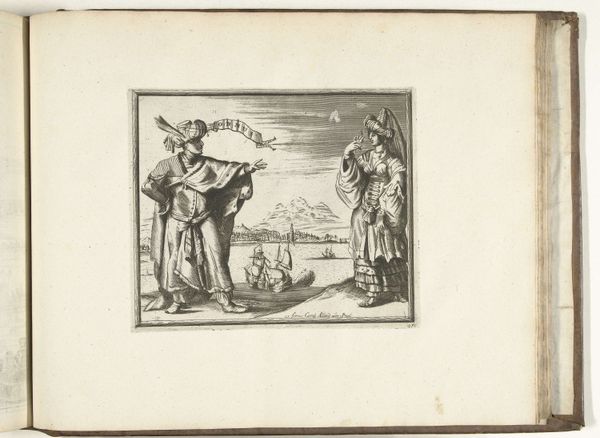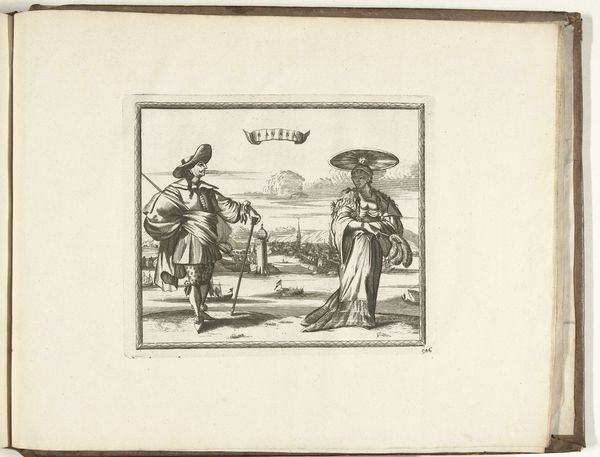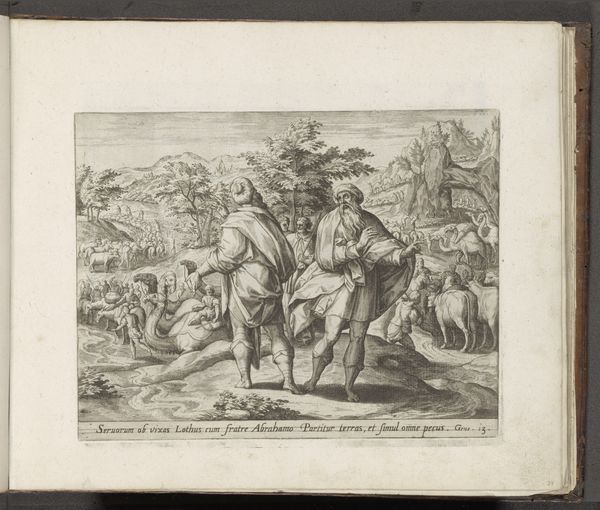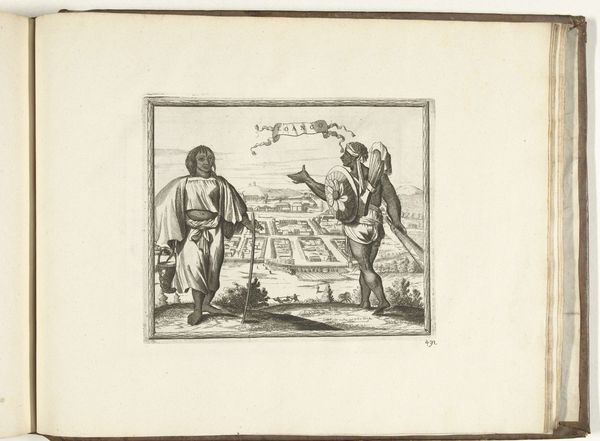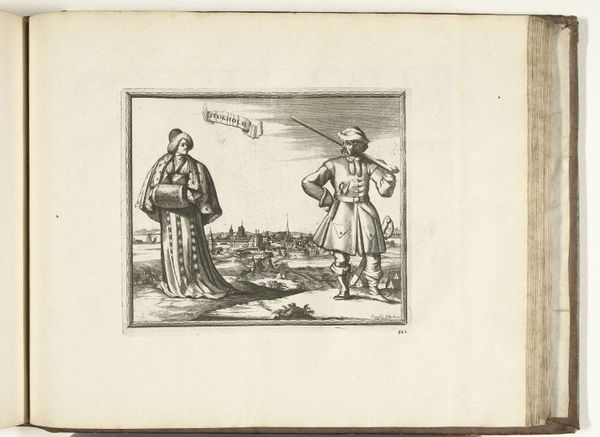
print, engraving
#
narrative-art
# print
#
landscape
#
engraving
Dimensions: height 173 mm, width 206 mm
Copyright: Rijks Museum: Open Domain
Curator: This is Carel Allard’s "Inwoners van Potosi, 1726," currently residing here at the Rijksmuseum. What are your initial thoughts? Editor: Immediately, I'm struck by the contrast between the formal, almost staged composition, and the exoticism implied by the subjects' attire. The clothing, even translated through engraving, speaks volumes. Curator: Indeed. This print, created in 1726, offers a fascinating glimpse into the perception of the indigenous population of Potosi, in what is now Bolivia, during the colonial era. The figures are meticulously rendered using engraving, a process that allowed for the reproduction of detailed imagery. Editor: The labor involved in such detailed engraving is considerable. Each line meticulously etched contributes to a particular depiction of indigeneity, circulated to comment on the colonial enterprise through careful reproduction and distribution of imagery. It almost turns people into commodities. The image normalizes their presence by capturing it through very slow means of manual manufacturing. Curator: Absolutely, this piece reveals a moment in time shaped by colonial power dynamics and its own internal politics. How would Allard, positioned in the Netherlands, contribute to this vision? And for what viewership was it conceived? Editor: Consider the institution; the Rijksmuseum itself provides another context. These kinds of images helped the Netherlands consolidate colonial authority abroad. In this case, through imagery circulated back home about life and activity on the continent. This is how narratives of national greatness are perpetuated through visual media and public consumption of artwork. Curator: Right. It shows us a very particular construction of otherness viewed through a distinct socio-political lens. And one could even analyze the type of paper and ink employed as tools that allow circulation through trade. The image's inherent materiality is also worth thinking about. Editor: Well, examining this work helps us consider not only how we perceive the past, but also how institutions actively shaped historical memory and reinforced power structures. It really complicates how we understand the impact of something like colonialism. Curator: Precisely. And, as we reconsider how resources are used, it challenges the value placed on artwork of this time. It opens new questions that invite ongoing, critical evaluation.
Comments
No comments
Be the first to comment and join the conversation on the ultimate creative platform.

